Embroidery is a type of craftwork that is created with needles and thread; unlike a sewing machine, embroidery works in a predetermined pattern. It is a special process of decorating fabric or other materials. Embroidery is commonly used in the garment industry to enhance the decoration of garment products. Embroidery has been practiced for ages and can be seen in cultures around the world. This sophisticated needlework has been around since ancient times. Those stitches followed the pattern of our core sector. This article discusses numerous types of embroidery used in the clothing business. Embroidery makes clothing and household items. etc. more attractive to consumers.
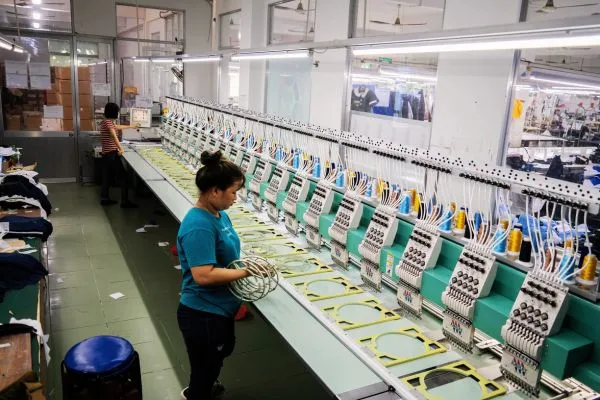
Table of Contents
Objectives of Embroidery
Embroidery serves several objectives, making it a versatile and enduring craft:
- Decoration: One of the primary objectives of embroidery is to decorate fabric or other materials with decorative designs. These designs can range from critical patterns to simple motifs, adding beauty and visual interest to the clothing items.
- Cultural Expression: Sometimes cultural heritage and traditions of a particular region are reflected by the craftwork of embroidery. Still these days, native Americans and Mexicans use embroidery in their clothes to refer to their cultural story and sometimes mythology. It serves as a means of expressing cultural identity and preserving traditional art forms all over the world.
- Communication: Embroidery can communicate ideas. Researchers find that, historically, embroidery has been used as a form of communication, conveying messages, symbols, and stories through different stitched designs. Embroidery patterns or motifs carry specific meanings or symbolism in some cultures.
- Identification: Embroidery has been used as a means of identification, such as in military uniforms, sports team logos, monograms, and some special organizational emblems. It helps distinguish individuals or groups and creates a sense of belonging.
- Reinforcement and Repair: This needlework can strengthen and reinforce fabric, particularly in areas subjected to wear and tear. In the case of mending or repairing damaged textiles and extending their lifespan, embroidery is being used.
- Artistic Expression: For many artisans, creating embroidery is a form of artistic expression. It offers a creative vibe for experimenting with colors, textures, and stitches, allowing individuals to showcase their craftsmanship and creativity.
- Economic Empowerment: Embroidery can serve as a source of income and economic empowerment, particularly for women in regions where traditional handicrafts play a significant role in the local economy.
- Skill Development: Learning embroidery crafts is fine soft skills, patience, and creativity. It’s a valuable skill for both practical and aesthetic purposes.
Types of Embroidery Stitches With Pictures
Different types of embroidery used on garments are listed below:
- Surface embroidery
- Counted embroidery
- Needlepoint embroidery
- Whitework embroidery
- Cross Stitch embroidery
- Sashiko embroidery
- Hedebo embroidery
- Redwork embroidery
- Candlewick embroidery
- Crewel embroidery
- Hardanger embroidery
- Bluework embroidery
- Drawn thread embroidery
- Pulled thread embroidery
- Goldwork embroidery
- Blackwork embroidery
- Overload embroidery
- Shadow work embroidery
- Eyelet embroidery
- Void work embroidery
- Chicken scratch embroidery
- Huckaback embroidery
Surface Embroidery:
Surface embroidery is a type of embroidery pattern that is a kind of decorative stitching and works with thread without using fabric on canvas. It has different forms, styles, different textures, dimensions, images, etc. added to the canvas to create simple and complex designs. Surface embroidery is a widely used technique that does not require special fabrics or expensive threads but requires creativity. This embroidery is one of the most popular embroideries in the garments industry.

Counted Embroidery
Counted thread embroidery is a work of a precise and uniform pattern. There are many types of counted embroidery. Before the needle is inserted into the fabrics, the fabric threads are inserted by the embroiderer in here.

Needlepoint Embroidery
The concept of needlepoint embroidery came from the ancient Egyptians, who used this kind of stitching in their tent as a canvas. Silk, cotton, wool, and some of the natural fiber, etc. are used for this embroidery. There are different sizes and types of needlepoint canvas available in the market such as mono, interlock, plastic, Penelope, rug’ etc. Currently, this embroidery is spreading commercially. Some of the significant stitches used in needlepoint embroidery are brick stitch, gobelin stitch, mosaic stitch, Parisian stitch, tent stitch, etc.
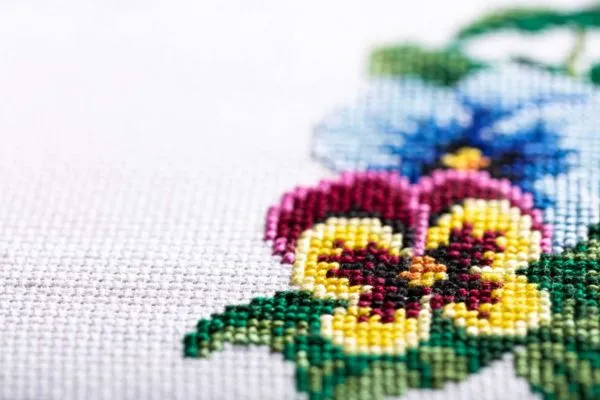
Whitework Embroidery
Whitework embroidery has evolved over time, in different areas. This particular embroidery requires the same sewing and foundation fabric colors. The term whitework refers to a precise form that refers to freestyle, counted thread, and canvas work techniques.
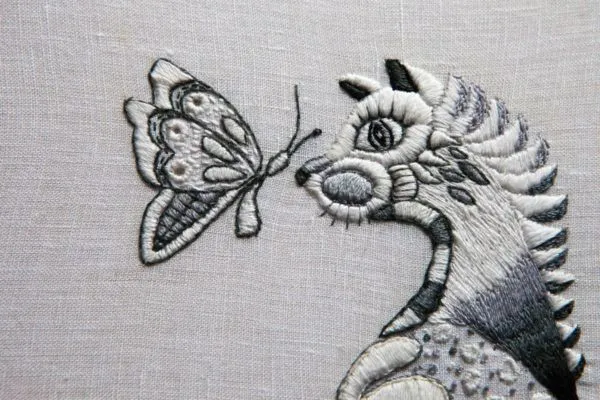
Cross Stitch Embroidery
Cross stitch embroidery is widely available stitching that looks like the alphabet ‘X’. Evenweave types of fabric like linen, Aida, and mixed fabrics are used in cross-stitching. The term even weave implies that the fabric woven contains the same number of yarns per inch. Cross-stitch embroidery is very popular in the clothing industry.
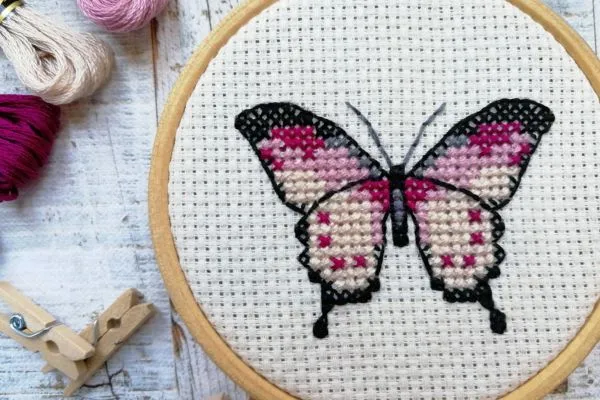
Sashiko Embroidery
Sashiko, the term refers to “little stab”, a traditional Japanese embroidery that is used to enhance the decorative beauty of clothing. The first embroidery was introduced in the Edo era to reshape the old-fashioned homespun clothes. This type of embroidery reflects Japanese folk which uses a basic running stitch to create an intricately patterned background.

Hedebo Embroidery
Originating in the Hedebo region of Denmark in the 1760s this embroidery was used for towels, pillows, men’s shirts, women’s dresses, and farmer’s interiors.
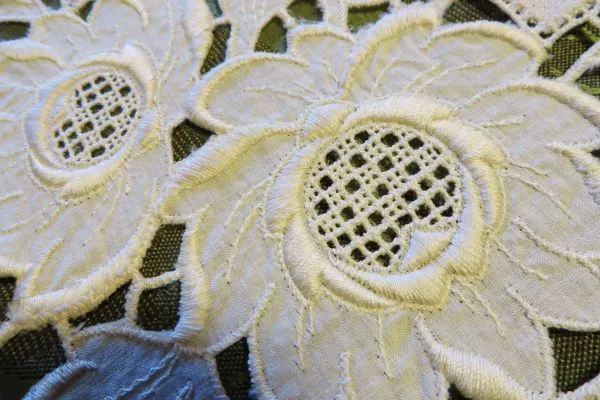
Redwork Embroidery
Redwork embroidery is infamous for the red thread, an American embroidery that was especially popular in the 19th century. This needlework looked very attractive and was used to decorate household items.
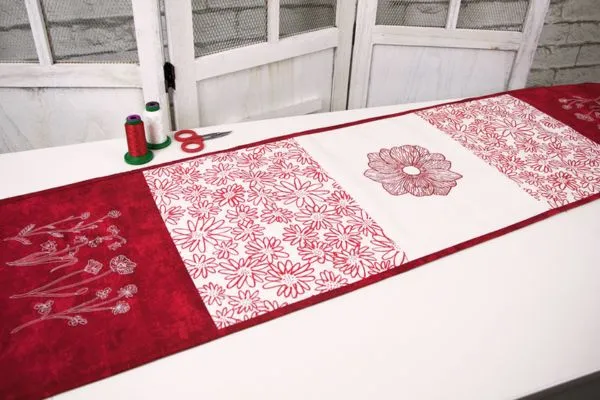
Candlewick Embroidery
Candlewick embroidery’s name comes from the nature of soft spun cotton. One of the notable features of this embroidery is that it embellished various forms of nature. Nowadays it is widely used as a cushion cover design.
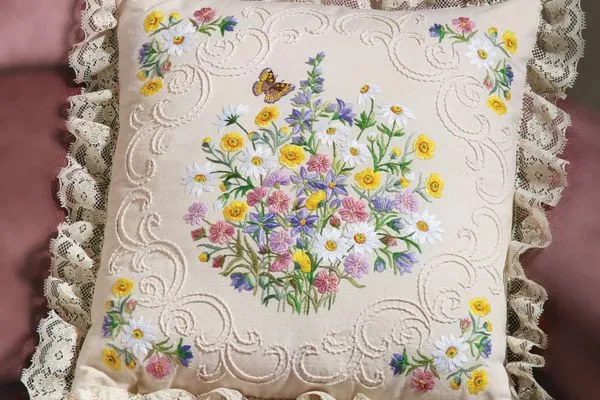
Crewel Embroidery
Crewel embroidery is created by the woolen thread. Originating from Britain in the late 18th century, this embroidery follows the outline of a particular design such as woven linen twill.
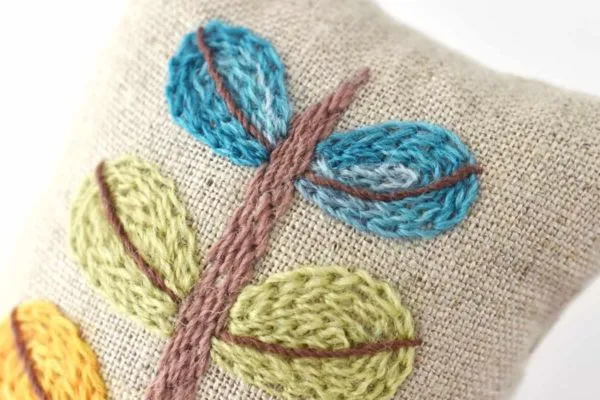
Hardanger Embroidery
A unique kind of whitework embroidery is called Hardanger embroidery. The thread used for Hardanger embroidery should match the color of the fabric. On the other hand, bright, diverse, and colorful threads are also used to create contemporary designs.
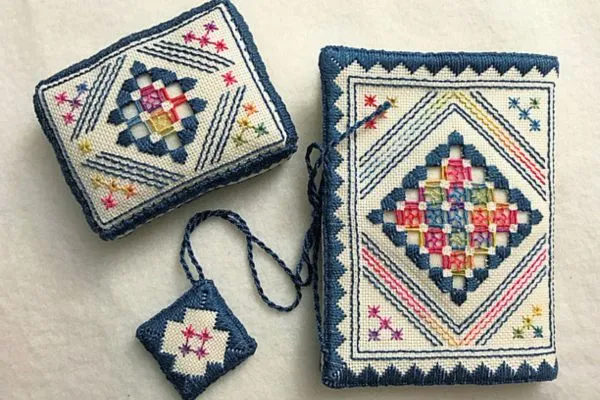
Bluework Embroidery
The only difference between the bluework embroidery and the redwork embroidery is the color of the thread. Instead of red thread, a special type of blue thread is used here. Different designs are usually applied using blue thread on a white background. In the 1910s, bluework embroidery became very famous in the industry.

Drawn Thread Embroidery
Drawn thread is one of the oldest embroideries in Europe. Its varieties of uses can be seen in religious objects and various ornaments.
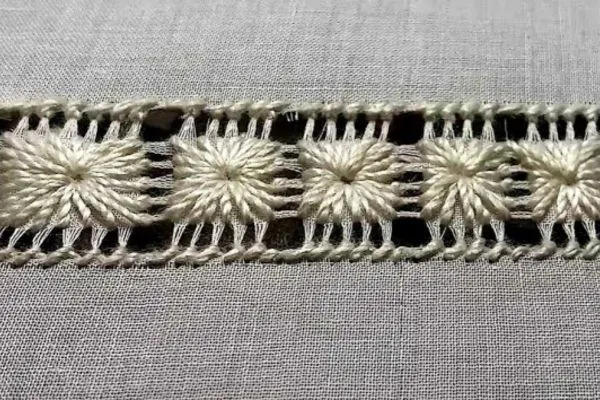
Pulled Thread Embroidery
Pulled thread embroidery, also called drawn thread embroidery, is a form of counted thread embroidery. The threads used in this embroidery need to be of fine quality and durable enough to withstand any strong tension.
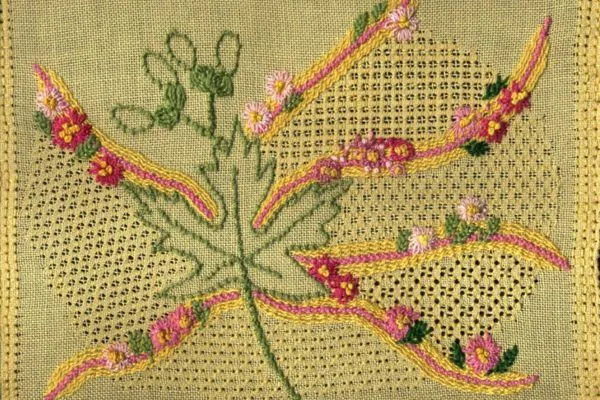
Goldwork Embroidery
The art of embroidery using metallic threads is known as Goldwork embroidery. The term ‘goldwork’ is used because the threads have a nature to imitate gold, silver, or copper. The same silver and old yarn was commonly used in the most expensive tapestry, especially during the Renaissance era.

Blackwork Embroidery
Blackwork embroidery is a craft of using black yarn. Blackwork on silk yarn over linen was the most anticipated household embroidery technique for household items such as shirts, sleeves, ruffles, caps, and cushion covers during the reign of Elizabeth one, the queen of England.
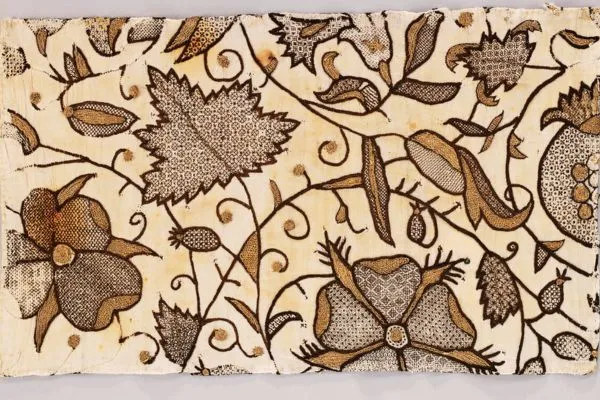
Shadow Work Embroidery
A 1920s silk chiffon scarf is adorned on one end with beautiful floral embroidery, while the elegant spring inspires the other end. Subtle shadow work, pin-stitched appliques, and creative embroidery stitching are illustrations for fabrics worked employing silk glossy cotton floss.
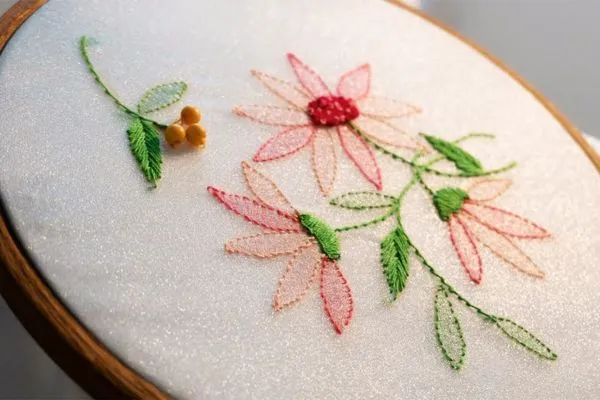
Eyelet Embroidery
Eyelet embroidery, this sophisticated needlework was used to adorn a variety of projects from Christian gowns to denim jackets.
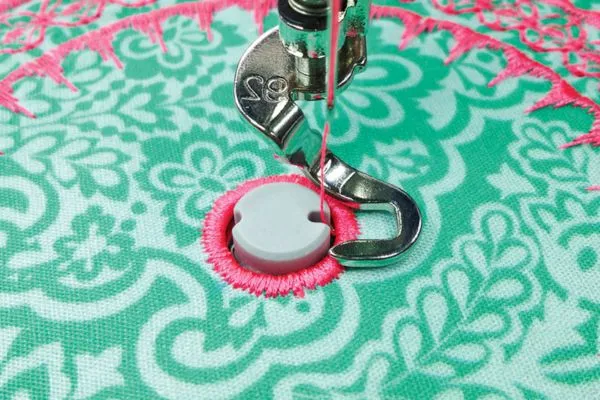
Void Work Embroidery
Void work embroidery consists of a furnished background. The main component of this embroidery is clearly visible because everything around it ends up being tightly embroidered.
Chicken Scratch Embroidery
A type of embroidered cross-stitch known as “chicken scratch,” which is typically embroidered onto gingham fabric with stranded embroidery thread or Parle Mercerized cotton thread. Gingham squares help create a lacy pattern and act as sewing guidelines.
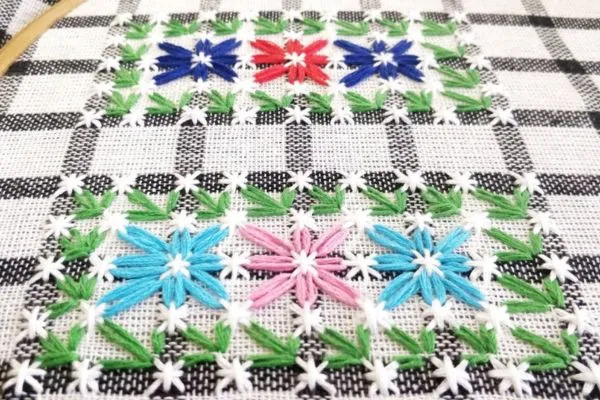
Huckaback Embroidery
It is a simple embroidery created by Swedish weaving and is embroidered using thread on huckaback fabric.
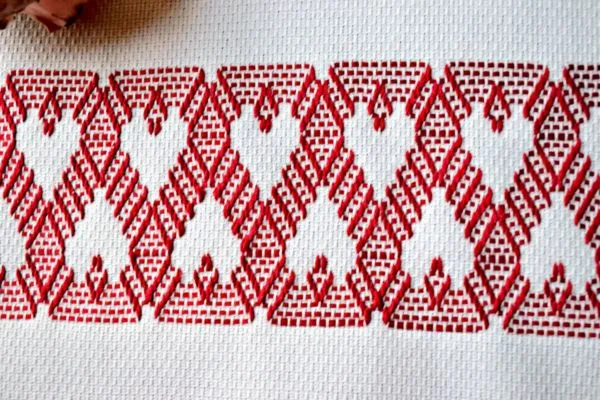
Embroidery machines used in Garments
Embroidery machines are a type of specialized sewing machine that is used extensively in the garment industry for decorative designs with thread on fabric and all sorts of clothing items.
Some of the most common types of embroidery machines used in garment production are given below:
1. One-Head Embroidery Machines:
- They are one-head machines, which are ideal for a small production or for a business that needs versatility in design placement.
- Good for custom designs and smaller-scale clothing production.

2. Multi-Head Embroidery Machines
- Multi-head machines refer to machines that have multiple embroidery heads (usually 2-16 heads or more), allowing a number of items of clothing or fabric to be embroidered at once.
- Best for the sewing industry operations with medium to high-scale production flow.
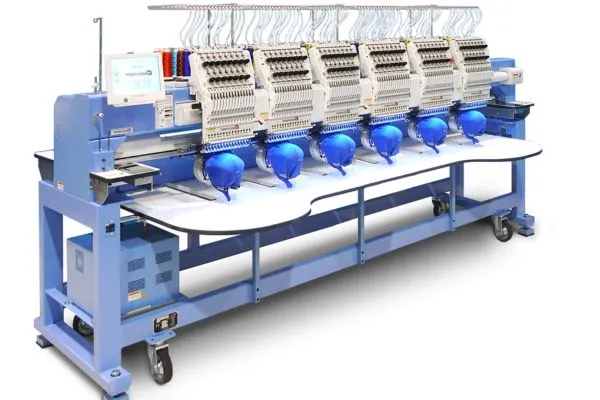
3. Flatbed Embroidery Machines:
- A flatbed machine has a flat area for sewing and is well-suitable for embroidering flat fabrics or finished products such as Patches, towels, or certain parts of garment panels.
- Fetching flatbed
- They fit with many types of clothes and styles.

4. Embroidery Machines for Free-Motion Embroidery
- These are also referred to as free-motion quilting machines because they are designed to allow the user to move the fabric freely under the needle, which would be difficult when utilizing other embroidery machines.
- They are made to do fine embroidery on apparel, especially on fancy wear which is high in appearance and value.
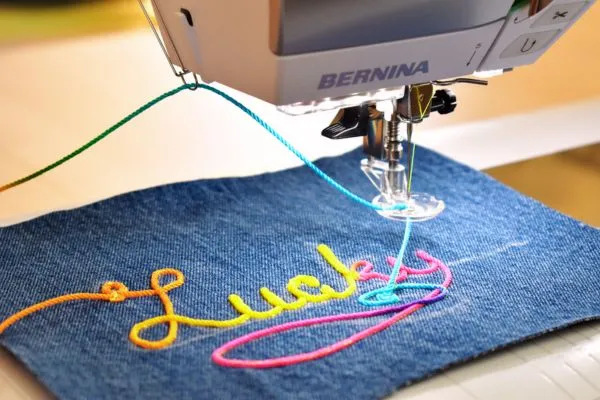
5. Industrial Embroidery Machines
- These are industrial-grade machines meant to be used for high to continuous production scales.
- These are typically very fast machines with heavy-duty construction and complex features to accommodate production-level needs.

6. Computerized Embroidery Machines:
- Nearly all embroidery machines in the present day have some amount of computer automation that enables accurate technique execution, personalization, and shuffling of designs with digital files.
- Computerized machines have a lot of stitches to choose from and usually have a touchscreen to allow more user-friendly control.
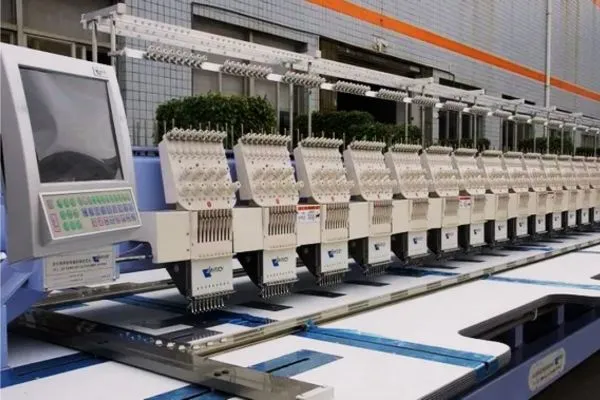
Types of Embroidery Threads
When choosing embroidery thread, it is important to think about the finished image. Rayon thread is most commonly utilized to create shiny final images. The rayon thread colors are clear and vivid, with a high gloss. Multifilament polyester fiber is a less expensive option, but it is less smooth and the colors are less clear and vibrant than rayon thread.
Here are a few common embroidery threads:
- Stranded Embroidery Cotton/ Embroidery Floss
- Mercerized Embroidery Thread
- Perle Cotton/ Pearl Cotton
- Rayon Floss (Satin Embroidery Thread)
- Nylon Embroidery Threads
- Laminate Or Flat Embroidery Thread
- Metallic Hand Embroidery Thread
- Crewel Yarn/ Wool
- Tapestry Yarn/ Persian Yarn
- Silk Embroidery Threads
- Knitting Yarn
- Variegated Threads Or Multi Color Thread
- Cord & Beading Thread
- Ribbons
- Crochet Thread
- Sashiko Thread
Top Quality Issues in Embroidery
Machine embroidery is an intriguing and creative art that allows enthusiasts to embellish garments, accessories, and home decor with detailed designs. However, as with any other craft, it has its share of issues.
- Thread Breaks/needle breaks
- Puckering Fabric
- Skipped stitches
- Bird’s Nests on the bobbin side
- Slow speed of the machine
- Fixing a hole
- Unstructured six-panel hats
- Loose stitches
- “Poor digitizing” by outside contractors
- Sawtooth edges, puckering, loose stitches
- Fabric fraying
- Hoop burn
Reference
- Textile Industry. Different Types of Embroidery Used in the Garments Industry. [Internet]. [cited June 15, 2024].
- Mayedul Islam. Garments Merchandising. Types of Embroidery Used in Garments. [Internet]. [cited June 15, 2024].
- Mazharul Isalm Kiron. Textile Learner. Different Types of Embroidery Threads with Advantages and Disadvantages. [Internet]. February 12, 2013. [cited June 15. 2024].
- Impressionmegzaine. Troubleshooting Common Embroidery Challenges. [Internet]. [cited June 15, 2024].
- SARINA TARIQ. Sewguide. 13 TYPES OF HAND EMBROIDERY THREADS. [Internet]. April 30, 2024 [cited June 15. 2024].
